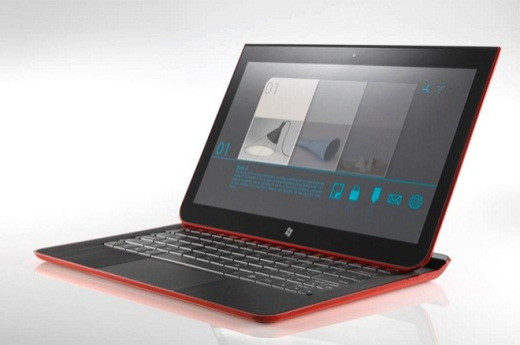Intel’s New Lows: Indicator Of Bad Earnings Ahead?

What’s wrong with Intel (Nasdaq: INTC), the No. 1 chip maker? On Thursday it set still another 52-week low of $21.52, down 25 percent from its 52-week high.
Is the PC and laptop sector so weak that the Santa Clara, Calif.-based microprocessing powerhouse has become the Sick Man of Silicon Valley?
Hardly. Analysts expect decent but diminished third-quarter financial results to be announced next Tuesday, but surely not the blowout expected with new Atom chips for mobile devices and pre-orders of machines loaded with Windows 8 from Microsoft (Nasdaq: MSFT), the world's biggest software company, scheduled for shipment next month.
Still, Intel shares are down 10 percent for the year and about 5 percent for the past 52 weeks. By now the thought was that consumers would be snapping up new Ultrabook laptops from Intel customers like Hewlett-Packard Co. (NYSE: HPQ) and Dell (Nasdaq: DELL), the No. 3 PC maker.
But market researchers have estimated tepid growth in the PC sector this year, compared with surges for smartphones and tablets. Both Gartner and IDC reported third-quarter shipments fell 8 percent.
Last week, for example, Intel customer Apple Inc. (Nasdaq: AAPL) was shown to have tweaked the new A6 processor inside its iPhone 5, rather than depend entirely on engineering from principal partner ARM Holdings (Nasdaq: ARMH) of the U.K.
That could mean over time that Intel, whose chips are in Macs, might lose that market -- the only segment of PCs that has grown this year -- as preferences shift. Intel's Clover Trail chip is its entry to battle the A6 and it's not yet shipping.
On Wednesday alone, two brokerage firms lowered their price target for Intel for the next year. Barclays maintained a “neutral” rating but trimmed the price to $22 from $24, while MKM chopped its target $3 to $27.
Analysts polled by Thomson Reuters expect Intel to report third-quarter net income about 25 percent below last year, or $2.57 billion, or 47 cents a share, compared with $3.46 billion, or 65 cents, a year earlier.
Intel’s revenue is expected to fall, too, to $13.2 billion from $14.2 billion.
So the forecast from CEO Paul Otelllini will be crucial, especially because so much may be bet on a good rollout of Windows 8 as well as fourth-quarter computer shipments by Intel’s customers.
Some analysts also worry that with lower sales, there’s less cash available for Intel CFO Stacy Smith to buy back shares and pay the quarterly dividend of 22.5 cents a share.
Romy Shah, an analyst with Nomura Securities who has a $22 target and a “reduce” rating on Intel, says the company used $14 billion to buy back shares last year. In 2011, the company had cash exceeding $11 billion, but that fell to $9.6 billion in the second quarter.
Also, Intel used about $4 billion in July to acquire a 15 percent stake in ASML Holding (Nasdaq: ASML), the Dutch semiconductor equipment maker among its top vendors. ASML also was planning to sell equity stakes to rivals Samsung Electronics (Seoul: 005930) and Taiwan Semiconductor Manufacturing Co. (NYSE: TSM).
At Bernstein Research, analyst Stacy Rasgon this week lowered his rating on Intel to “underperform” from “market perform” because he worries about the company’s ability to raise prices as it encounters more competition.
Rasgon suggested Intel’s average selling price will keep falling, from $94.17 per system this year to $88.84 next year and $85 in 2014, which would account for weakness in the shares.
To be sure, with a price-earnings ratio of only 9 and a world-class reputation as the company whose founders, including Robert Noyce, invented the microprocessor, a low price might present an excellent buying opportunity. Or it could be the chance for an activist investor to step in to demand better performance.
© Copyright IBTimes 2024. All rights reserved.






















